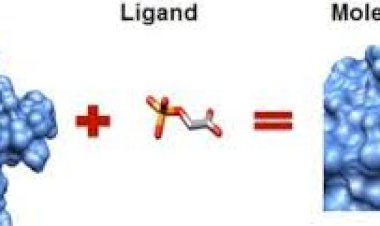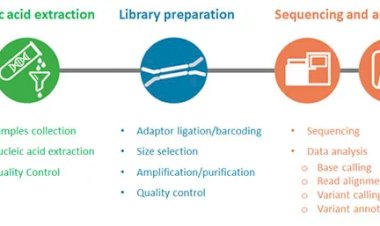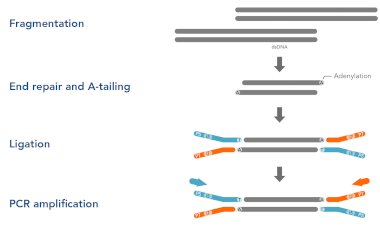Molecular Modeling: A Key Tool in Drug Discovery and Biomedical Research
In the current fields of material science, biology, and drug development, molecular modeling is a crucial tool. It helps in the development of novel pharmaceuticals, the comprehension of biological interactions, and even the creation of novel materials by combining the strength of computational techniques with molecular biology to simulate, visualize, and forecast the behavior of molecules. The fundamentals of molecular modeling, its uses, the several approaches it involves, and how it is transforming scientific research and drug discovery will all be covered in this blog.

What is Molecular Modeling?
Molecular modeling refers to the use of computational algorithms and software to model the structures, properties, and behaviours of molecules at an atomic or molecular scale. By predicting how molecules interact with each other and their environment, researchers can uncover new insights into molecular mechanisms, design better drugs, optimize chemical reactions, and even predict material properties without the need for expensive or time-consuming experimental work.
The Role of Molecular Modeling in Drug Discovery
Molecular modeling is used in drug development to create, test, and optimize medicinal compounds while forecasting their safety, effectiveness, and possible adverse effects. Prior to carrying out expensive laboratory tests, researchers may now digitally screen millions of substances for possible therapeutic effects thanks to the development of high-throughput computing and complex algorithms.
Applications of Molecular Modeling in Drug Discovery:
- Target Identification: Understanding the role of proteins, enzymes, or receptors in disease pathways is the first step in drug development. Molecular modeling helps researchers visualize the structure and function of target molecules.
- Ligand Design: After identifying a target, molecular modeling helps design molecules (ligands) that can interact with the protein or enzyme to modify its activity.
- Docking Studies: Virtual screening and molecular docking simulations allow researchers to predict how well a drug candidate binds to its target protein, providing valuable information on binding affinity and selectivity.
- Lead Optimization: Once a promising drug candidate is identified, it undergoes optimization to improve its binding properties, stability, and pharmacokinetic profile.
Core Techniques in Molecular Modeling
Molecular modeling encompasses a wide range of techniques. Let’s break down some of the most widely used methods in drug design and molecular research.
- Molecular Dynamics (MD) Simulations
Researchers can see how molecules behave in a variety of scenarios by using molecular dynamics simulations, which simulate the actual movement of atoms and molecules over time (e.g., in a solvent or complicated biological environment). This enables them to investigate the stability and flexibility of molecules and gain a deeper understanding of their interactions. Protein folding, ligand binding, and the impact of mutations on molecular structures can all be investigated using MD simulations.
Popular Tools: GROMACS, AMBER, CHARMM, NAMD
- Molecular Docking
A computational method called molecular docking is used to forecast how ligands, which are small molecules, would interact with larger molecules—typically proteins—by attaching to their active sites. By simulating the binding process, docking aims to find possible medication candidates by evaluating their affinity for the target. This method is essential for virtual screening, which finds the most promising candidates by testing thousands of chemicals against a target protein.
Popular Tools: AutoDock, DOCK, GOLD, Glide (Schrödinger)
- Quantum Mechanics (QM) and Molecular Mechanics (MM)
The energy of atoms and molecules can be determined, their structures can be predicted, and atomic-level interactions can be simulated using quantum mechanics and molecular mechanics. While molecular mechanics (MM) is employed for bigger systems like proteins and nucleic acids, where QM calculations would be computationally costly, quantum mechanics (QM) is frequently used for high-precision investigations of tiny molecules.
Popular Tools: Gaussian, ORCA, OpenMM, LAMMPS
- Protein-Ligand Interaction Studies
A key component of medication discovery is comprehending how tiny compounds attach to their target proteins. Predicting binding affinity, studying hydrogen bonds and hydrophobic interactions, and analyzing the energy landscape of protein-ligand interactions are all made possible by molecular modeling. To improve the binding specificity and optimize medication candidates, this information is essential.
Popular Tools: AutoDock Vina, MOE (Molecular Operating Environment), Sybyl, FlexX
- De Novo Drug Design
In de novo drug design, researchers use computational algorithms to design novel molecules with specific properties that are optimized for binding to a target protein. This approach is especially useful when there are no known ligands or when a new chemical space needs to be explored for potential drug candidates.
Popular Tools: LigandScout, MOE, ChemAxon, Cresset
The Molecular Modeling Workflow in Drug Discovery
Here’s a simplified overview of how molecular modeling plays a pivotal role in the process of drug discovery:
- Target Identification: Understanding the disease mechanism and identifying the molecular target (usually a protein, receptor, or enzyme) responsible for the disease.
- Structural Analysis: Acquiring the 3D structure of the target protein (often from databases like the Protein Data Bank, PDB) or predicting it using tools like AlphaFold if the structure is unknown.
- Ligand Screening and Design: Using virtual screening methods to test a vast library of compounds or designing novel ligands through de novo design.
- Molecular Docking: Performing docking simulations to evaluate how well the ligands bind to the target protein and predicting their binding affinity.
- Molecular Dynamics Simulation: Refining the docking results by simulating how the protein-ligand complex behaves over time in a biologically relevant environment.
- Lead Optimization: Optimizing the chemical structure of promising drug candidates to enhance their potency, selectivity, and drug-like properties.
- ADMET Prediction: Predicting the Absorption, Distribution, Metabolism, Excretion, and Toxicity (ADMET) properties of the drug candidate to ensure it has desirable pharmacokinetics and minimal side effects.
Popular Molecular Modeling Software
- PyMOL: Widely used for visualizing protein structures, molecular dynamics simulations, and docking results.
- Chimera: A powerful tool for visualizing and analyzing molecular structures, along with capabilities for docking and molecular dynamics.
- AutoDock: An open-source docking tool used for predicting how small molecules interact with proteins.
- GROMACS: A high-performance MD simulation package used to study the behavior of molecules in complex environments.
- Schrödinger Suite: A commercial software suite that provides tools for docking, molecular dynamics, and quantum mechanical calculations.
- AMBER: A set of programs used for simulating the interactions of biomolecules using molecular dynamics and force fields.
Applications of Molecular Modeling Beyond Drug Discovery
While drug discovery is one of the most significant applications, molecular modeling is used in various other fields:
- Protein Engineering: Optimizing enzymes and other proteins for specific functions or improving their stability.
- Materials Science: Designing new materials, from polymers to nanomaterials, by understanding molecular interactions at the atomic level.
- Toxicology: Predicting the toxic effects of chemicals by modeling their interactions with biological systems.
Future of Molecular Modeling
Molecular modeling will continue to change how we approach scientific challenges as computing power and algorithms advance. Workflows for molecular modeling are already incorporating AI and machine learning to make predictions more quickly and accurately. This will pave the way for more individualized treatment, improved therapeutic agents, and the creation of novel materials that have the potential to transform a variety of sectors, including nanotechnology and biotechnology.
IBRI Noida: Certification Course in Molecular Modeling
For those looking to deepen their understanding of molecular modeling, the Indian Biological Sciences and Research Institute (IBRI) Noida offers a Certification Course on this cutting-edge field. The course is designed for students, researchers, and professionals aiming to enhance their skills in computational techniques used in drug discovery and molecular design. IBRI Noida provides a comprehensive curriculum covering key areas like molecular dynamics simulations, protein-ligand docking, and drug design techniques. Participants will gain practical experience through exercises and case studies. Upon completion, attendees will receive an official e-certificate, validating their proficiency in molecular modeling.
Conclusion
Molecular modeling has become a vital tool in contemporary research, especially in the creation and identification of new drugs. It enables researchers to make well-informed decisions, reduce expensive experimental work, and expedite the drug discovery process by mimicking the behavior and interactions of molecules. Using cutting-edge instruments and methods, molecular modeling is contributing to the resolution of some of the most difficult medical issues facing the globe and moving us one step closer to more potent, specialized treatments for a variety of illnesses.
If you’re a researcher, drug developer, or student looking to dive deeper into molecular modeling, exploring the key techniques and software can provide you with the foundation needed to push the boundaries of modern science.
































